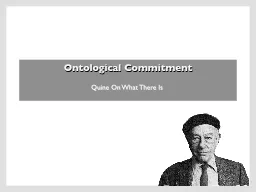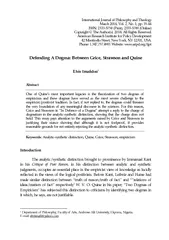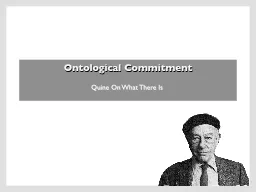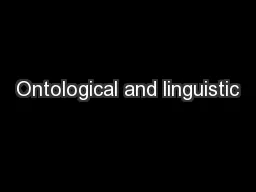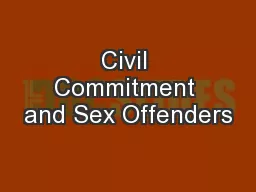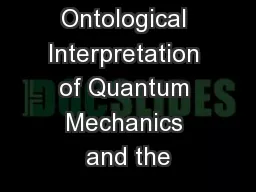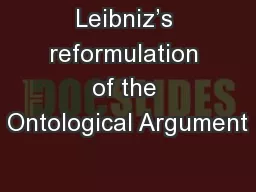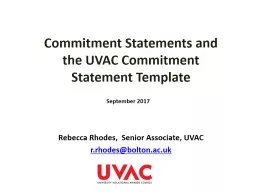PPT-Ontological Commitment Quine On What There Is
Author : pamella-moone | Published Date : 2018-10-31
The Problem of Ontology What is there physical objects fictional characters numbers ideas colors God The Present King of France Pegasus The BackStory Russells Theory
Presentation Embed Code
Download Presentation
Download Presentation The PPT/PDF document "Ontological Commitment Quine On What The..." is the property of its rightful owner. Permission is granted to download and print the materials on this website for personal, non-commercial use only, and to display it on your personal computer provided you do not modify the materials and that you retain all copyright notices contained in the materials. By downloading content from our website, you accept the terms of this agreement.
Ontological Commitment Quine On What There Is: Transcript
Download Rules Of Document
"Ontological Commitment Quine On What There Is"The content belongs to its owner. You may download and print it for personal use, without modification, and keep all copyright notices. By downloading, you agree to these terms.
Related Documents

